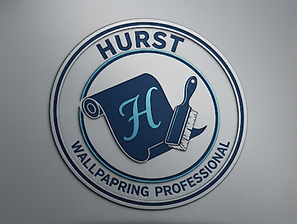Step-by-Step Guide to Perfectly Installing Wallpaper
- dhurst95
- Jul 5
- 3 min read
Installing wallpaper can seem like a daunting task, but with the right tools, materials, and approach, it can transform your space beautifully. This step-by-step guide will walk you through the process of wallpaper installation, ensuring you achieve stunning results.
Wallpaper Guide: Gathering Your Supplies
Before you dive into the installation, ensure you have all the necessary materials at hand. Here's what you'll need:
Wallpaper: Choose a design that complements your room.
Wallpaper paste: Depending on your wallpaper type, you might need pre-pasted or unpasted.
Smoothing tool: A wallpaper smoother helps eliminate bubbles.
Utility knife: Essential for cutting the wallpaper accurately.
Tape measure: For precise measurements.
Level: To ensure the wallpaper goes on straight.
Sponge: For cleaning excess paste.
Scissors: Useful for trimming.
Make sure to decide on a specific theme or color palette before selecting your wallpaper. This will ensure everything looks cohesive.

Preparing the Wall for Installation
Preparation is key to a successful wallpapering project. Follow these steps to prepare the wall:
Clean the Surface: Remove any dirt, grease, or dust from the wall using a damp cloth.
Repair Damages: Fill in holes or cracks with spackle. Once dry, sand the area smooth.
Remove Old Wallpaper: If there's existing wallpaper, you must take it off entirely for a clean start.
Prime the Wall: Applying a primer helps the wallpaper stick better and makes removal easier later on.
While the wall dries, you can cut your wallpaper into strips. Allowing the wallpaper to rest will make it easier to handle during installation.

Why do you start in the middle when wallpapering?
Starting in the middle of the wall ensures the pattern aligns evenly on both sides. If you start at the corner and the wall is not perfectly straight, the pattern may look skewed. Here’s why this method is effective:
Symmetry: It allows for balanced visual appeal. Patterns often look best when centered.
Wall Variability: Walls aren’t always perfectly straight; starting in the middle can balance out any discrepancies.
To find the center, measure the wall’s width and mark the middle point with a pencil. Use a level to draw a vertical line from this mark to the ceiling.
Applying the Wallpaper
Now that you have prepared the wall and are ready to begin, follow these steps for application:
Apply the Paste: If you are using unpasted wallpaper, apply paste to either the wall or the back of the paper. Allow it to sit for a few minutes to ensure it becomes tacky.
Align the First Strip: Position the first strip along your center line, starting at the top. Use your level to ensure it is straight.
Smooth It Out: Use a smoothing tool to push out air bubbles, working from the center outwards.
Trimming and Next Strips: Trim the excess paper at the top and bottom with your utility knife. For the next strips, match the pattern carefully.
Continuing this method will allow you to wallpaper the entire wall seamlessly.

Tackling Corners and Edges
Corners and edges can be tricky. Here’s how to handle them:
Inside Corners: When you reach an inside corner, fold the strip inward slightly and cut it so it fits snugly. Make sure not to press too hard, as you'll need some flexibility.
Outside Corners: For outside corners, slightly overlap the previous strip and trim away excess. Ensure the pattern matches as closely as possible.
Final Touches: After completing all the strips, check for any air bubbles or seams that need extra smoothing.
Caring for Your New Wallpaper
Once the wallpaper is installed, it's essential to care for it properly to ensure longevity. Here are some essential tips:
Avoid Moisture: Keep your wallpaper dry. Excessive moisture can lead to peeling.
Regular Cleaning: Dust the wallpaper regularly using a soft cloth. For stains, use a damp sponge without using abrasive materials.
Watch for Peeling: If you notice any peeling edges, simply reapply some paste below the affected area and press it back down.
Maintaining your wallpaper not only keeps it looking fresh but also prolongs its life.
Final Thoughts on Wallpaper Installation
Installing wallpaper can immensely enhance your living space when done correctly. With patience and careful attention, your walls can showcase a beautiful pattern that reflects your style. This wallpaper installation guide should equip you with the essential knowledge and tools to start your project confidently.
Remember, take your time, and don’t rush the process. Enjoy transforming your space, and revel in the beauty of your newly wallpapered walls!





Comments